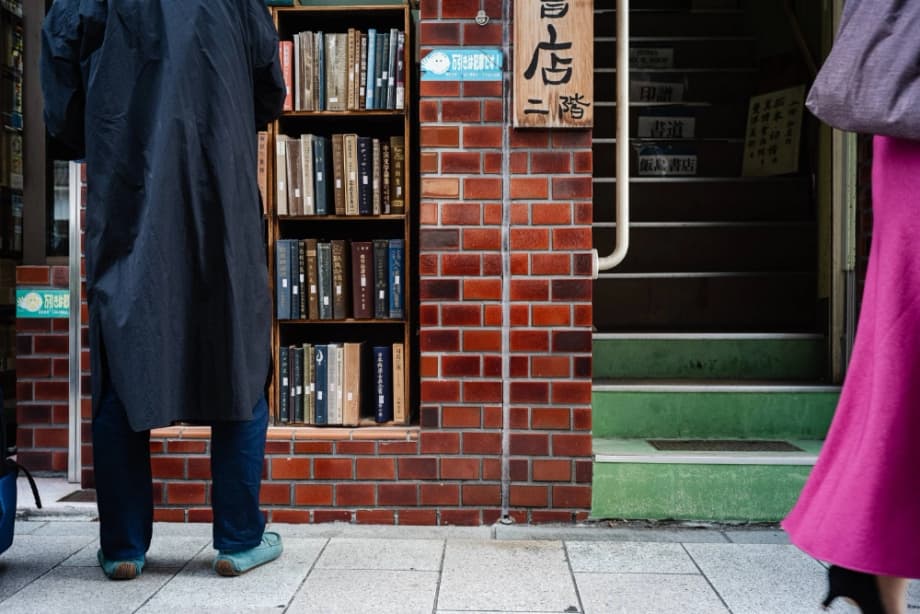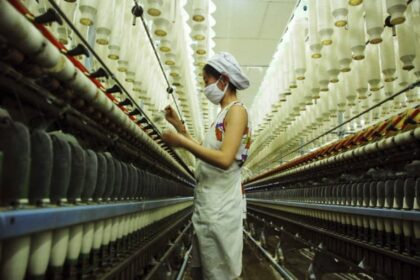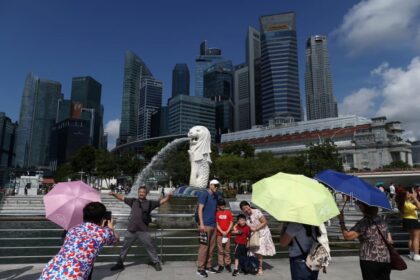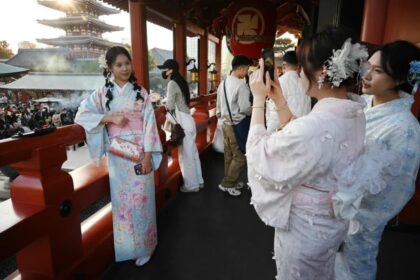Why this quiet book town topped a global list
Tokyo’s Jimbocho, a compact district famed for secondhand bookstores and hearty curry counters, has been named the world’s coolest neighborhood for 2025 by Time Out. The pick vaulted a bookish enclave that rarely makes tourist shortlists onto the global stage. Many Tokyo residents greeted the news with surprise. The area is known more for quiet browsing, coffee refills, and lunchtime queues than for flashy nightlife.
Time Out says it builds the list with nominations from local editors and writers, then ranks neighborhoods on culture, community, livability, nightlife, food and drink, street life, and a quality it calls nowness. Jimbocho landed at number one ahead of Borgerhout in Antwerp, Barra Funda in Sao Paulo, Camberwell in London, and Avondale in Chicago. Rounding out the top ten are Mullae dong in Seoul, Menilmontant in Paris, Nakatsu in Osaka, Vallila in Helsinki, and Labone in Accra.
Grace Beard, the travel editor at Time Out, framed the ranking as a celebration of places shaped by the people who live there.
The biggest takeaway from this year’s Time Out ranking is just how much our neighborhoods are shaped by, and for, their local communities.
What makes this neighborhood cool right now
Jimbocho’s appeal lies in a mix of history and everyday life. Around 130 secondhand bookshops fill low rise mixed use buildings. Cafes and curry houses sit at street level, with offices, classrooms, and tiny galleries tucked above. Fresh energy comes from a steady flow of students and young creatives. Classic spots include Saboru, a cafe with retro charm and famous pizza toast. Walkabout Coffee riffs on Australian style espresso. Curry fans line up at Curry Bondy and Sangatsu no Mizu. Cocktail Works Jimbocho pours craft gin drinks. Yon blends an art gallery, a bar, and a listening room. Newer indie booksellers such as Stacks Bookstore add to the mix. Collectors make regular pilgrimages to Komiyama Shoten and Kitazawa Bookstore, two anchors of the scene.
Isseido Booksellers offers antique and foreign language volumes. Specialist shops cater to art, photography, rare magazines, and niche interests. Many shops are owner run and curated with a personal voice. Shelves may hold a first edition on one level and a stack of manga on the next. Most bookshops close by early evening, so browsing is a daytime ritual.
The streetscape heightens the pleasure of slow exploration. Signboards cling to the sides of narrow buildings. Stairs lead to tiny floors packed with titles you did not expect to find. An afternoon can slip by as you move from stacks to coffee counter to browsing again.
A book town that kept its soul
Jimbocho grew alongside Tokyo’s academic core. Universities such as Meiji, Nihon, and Senshu sit within walking distance, as do research libraries and publishing offices. The neighborhood took shape in the early twentieth century as a hub for printing, bookbinding, and scholarly book trade. Many of the buildings are modest and practical, which helped preserve its small scale character.
Japan’s print industry faces headwinds as digital reading has grown and demographics have shifted. That makes the Time Out spotlight feel like both validation and a lifeline for some shopkeepers. The district has inspired fiction as well, including Satoshi Yagisawa’s Days at the Morisaki Bookshop, a novel set inside a secondhand store in the area.
Michiaki Kamoshida, a bookseller at Honmaru, a shared bookstore where individuals or companies rent a shelf and curate their own collection, captured the tone of pride and surprise that many expressed.
I’m very happy, but it was unexpected, Kamoshida said. Books aren’t really getting that much attention these days, even globally. Especially in Japan, the publishing industry isn’t doing that well. So I was very surprised to see this book town getting attention.
That humility helps explain the draw. Shops compete less on slick design and more on curation, conversation, and care for the printed word.
Curry, coffee, and a retro rhythm
The food scene reflects the same blend of comfort and character. Japanese curry, a thick roux with rice and a pickled garnish, is a local staple. Kitchen Nankai has served katsu curry since the 1960s. Curry Bondy and Sangatsu no Mizu are other favorites. Prices are friendly for students, and seats turn over fast at lunch.
Old school coffee houses, or kissaten, are part of daily life. Milonga Nueva pairs hand brewed coffee with Argentine tango records. Mafumi Coffee connects pour overs with calligraphy. At Cafe Ataraxia, staff play classical LPs on vintage equipment, including a hand cranked gramophone from the early 1900s. Saboru, open since the mid 1950s, is a time capsule, famous for a thick slice of pizza toast.
The evening scene leans toward listening bars, cocktail counters, and low key hangouts. Cocktail Works Jimbocho builds drinks around craft gin and seasonal ingredients. Yon hosts small art shows and a vinyl forward sound system. The music is present, conversation flows, and last call comes earlier than in nightlife districts across the river.
How locals are reacting
Reactions in Jimbocho range from delighted to doubtful. Many business owners welcome the attention, yet say they never chased the cool label. In online forums, some long time Tokyo residents cheer the choice, while others question whether a quiet book district fits a global idea of cool.
The split tracks with what makes the area different. Jimbocho rewards unhurried afternoons, not checklists. It offers a living record of student life, publishing culture, and cafe traditions in Tokyo.
That is the appeal for readers and collectors who already know the streets here. The ranking does not change the shelves, the staff recommendations, or the smell of paper. It might change the number of people who show up.
Could the ranking change Jimbocho
Waves of visitors will likely bring fresh revenue to booksellers, cafes, and curry kitchens. Crowds can also test a compact street grid, and they can push up rents over time. Small family shops sometimes struggle when leases come up. Those concerns are familiar in cities where a charming district lands suddenly in global guidebooks.
Other places on the 2025 list offer examples. Borgerhout in Antwerp ties growth to collaborative arts spaces. Camberwell in London leans on independent businesses and green spaces. When interest rises quickly, local groups often steer events, fairs, and opening hours to keep streets welcoming for residents. Jimbocho has a head start. The universities, used book fairs, and long relationships between owners and customers give the area stable roots.
Tokyo officials and neighborhood associations tend to promote respectful tourism across the city. In Jimbocho, the best guardrail is the scene itself. Shops are small, downtime is real, and browsing is the main activity. A place like that changes slowly.
Visiting tips and etiquette
A few practical habits will keep your day smooth and respectful.
- Plan to browse in the daytime. Many shops close by early evening.
- Start with anchor bookstores such as Isseido and Kitazawa, then wander side streets.
- Handle rare books gently. Ask before opening sealed items.
- Ask before taking photos inside stores.
- Keep voices low. Aisles are narrow and bench seating is limited.
- Pay in cash at smaller shops. Some cafes accept cards, but not all.
- Try a curry lunch, then give your seat to the next person when finished.
- Use public transit. Jimbocho Station sits on the Hanzomon Line, Toei Shinjuku Line, and Toei Mita Line.
- Check cafe and bar hours. Many places take short breaks in the afternoon.
- Step to the side when checking a map to avoid blocking foot traffic.
A little patience and etiquette will make your visit better for everyone.
At a Glance
- Time Out named Jimbocho the world’s coolest neighborhood for 2025.
- Rankings weigh culture, community, livability, nightlife, food and drink, street life, and nowness.
- The district holds around 130 secondhand bookstores alongside retro cafes and curry houses.
- Saboru, Curry Bondy, Sangatsu no Mizu, Isseido, Komiyama Shoten, and Kitazawa Bookstore are popular stops.
- Time Out travel editor Grace Beard highlighted how local communities shape the best neighborhoods.
- Bookseller Michiaki Kamoshida said he was happy yet surprised by the attention.
- Top five in 2025: Jimbocho, Borgerhout, Barra Funda, Camberwell, Avondale.
- Most shops close early. Plan daytime browsing.
- Small spaces reward quiet manners and care for the books.
- Expect more visitors, with local businesses likely to see a boost.












